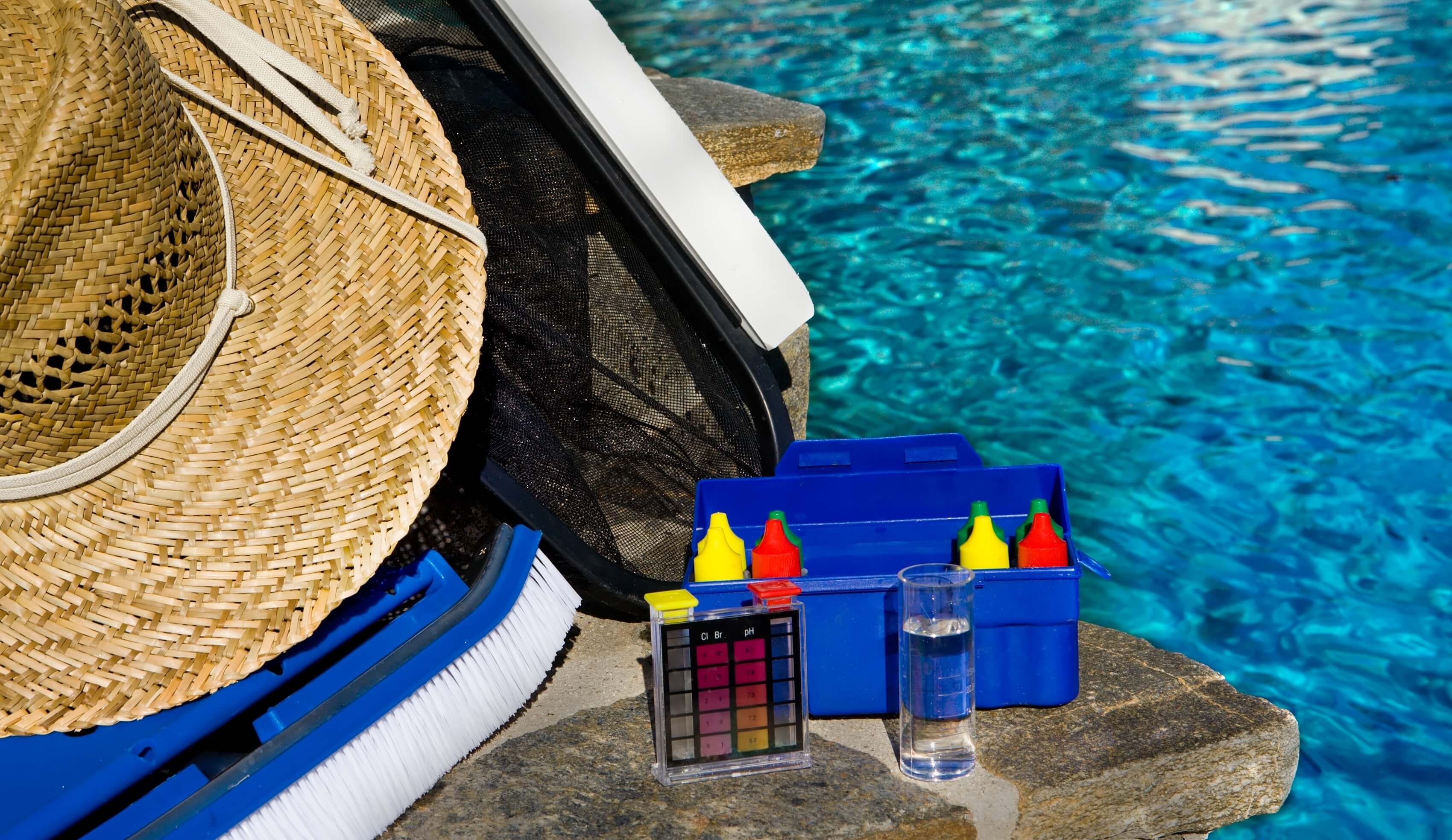Perfect Pool Water Chemistry in 4 Easy Steps

Pool Maintenance Tips Boerne, Spring Branch & San Antonio
A major part of owning a pool is ensuring that your pool water is safe and clean. In order to accomplish this, you need to pay attention to your pool water chemistry on a regular basis. This is not a complicated task, as long as you follow the basic instructions provided by your pool contractor and these four easy steps. If you want to keep your water pool clear, clean and healthy, then take a moment to review these simple steps.
1 – Determine Water Hardness
Your first step is to determine the level of water hardness of your pool water. Hard water can make it difficult for the chemical compounds that you use to do their job. Minerals, calcium and dirt particles found in the water that you use to fill your pool, will directly affect your water hardness. It’s important to check your water hardness; the level you are trying to achieve should be between 200 and 400 part per million. If your pool water is too hard, consider draining part of your pool water and refilling it before taking another reading. On the rare chance that your water is too soft, you may need to add calcium chloride.
2 – Use Chlorine Properly
The next step in keeping your pool water healthy is to ensure you are using chlorine properly. The company responsible for installing your pool should have offered you instructions as to what type of chlorine to use. Chlorine combats algae growth and bacteria. When your pool water has too much chlorine, the pool water could become uncomfortable or even harmful to swim in. When a pool does not contain enough chlorine, your pool water could end up with troublesome algae growth. Typically, the range of chlorine that should be added to your pool water should fall between 1 and 10 part per million.
3 – Check the pH Level
Most people are aware that the pH level of pool water needs to be checked frequently. Using a pH testing kit you can determine the level of acidity of your pool water. The acceptable ranges for your pH level are between 7.2 and 7.8.
4 – Use Cyanuric Acid
Cyanuric acid is used as a conditioner. This is used to help maintain your chlorine levels inside your pool water and prevents the chlorine from being affected by direct exposure to sunlight. As with other chemicals, there is a recommended safe level for the use of cyanuric acid. The goal is to reach a level between 30 to 80 parts per million.
These four steps work together to ensure optimum water safety and clarity. The chlorine stops the growth of algae, hard water can make it difficult for your chemicals to do their job, pH level informs you of the acidity of your pool water, and cyanuric acid can help keep your chlorine at suitable levels.

